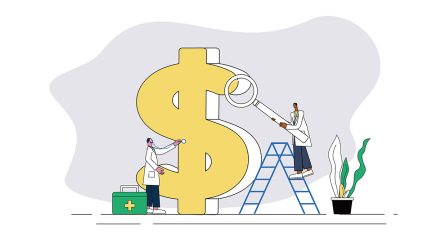For more stories like this, sign up for the PLANSPONSOR NEWSDash daily newsletter.
HSA Investment Menus Shouldn’t Just Replicate Those of DC Plans
Devenir offers suggestions for plan sponsors when crafting an HSA investment menu or benchmarking the investment menu of a provider.
Investing health savings account (HSA) assets can help participants grow their balances for current and future health care expenses.
Often plan sponsors mirror their defined contribution (DC) plan investment lineup in their HSAs, but a white paper from Devenir, a provider of customized investment solutions for HSAs and the consumer health care market, suggests this may not be the best strategy.
Devenir says it may be advantageous to include more funds in an HSA menu than a DC plan menu due to the wider range of use cases for HSAs, among other factors.
“Simply replicating the typical retirement plan menu is a less compelling strategy for HSAs due to the potentially differing objectives of the end user,” Devenir says. Common objectives providers have when offering investment menus include:
- Simplification – this results in a limited menu size with core asset classes and an active or passive choice of funds.
- Minimize costs – this results in an intermediate-sized menu with core and some supplemental asset classes and a passive-oriented choice of funds.
- Maximize return potential – this results in an expanded investment menu with core and supplemental investment options, and potentially a brokerage window, and an active-oriented choice of funds, as well as target-date funds.
Devenir notes that the case for limiting the number of funds on a menu often stems from research which has shown investors may be overwhelmed by choice, lowering participation rates, or that investors prefer default investment options. However, Devenir says it believes HSAs have the ability to offer a reasonably more sophisticated menu for several reasons: HSA providers do not auto-enroll participants into the investment account, so account holders have to take action to invest, which may lower default utilization; HSA account holders have been shown to exhibit high levels of consumerism (according to Alegeus, consumers enrolled in HSAs are more fluent, engaged, and make savvier health and financial decisions than the general public), meaning HSA investors are potentially more capable of navigating investments; HSAs often do not offer a diversified default investment, as defaults are often set to money market funds (which, however, may still produce a more favorable outcome than leaving balances in cash); and HSAs are less likely to be the first investing experience for participants.
According to Devenir, one of the potential benefits of larger investment menus for HSAs is the appeal to a wider range of investor sophistication and objectives. The range of funds that limits default utilization, minimizes plan costs, and allows investors to build quality portfolios will vary based on a number of factors, including client objectives, financial literacy of the participant population, user experience of technology platform (specifically, how the menu is presented to the account holder), and marketplace demand (investors may be more successful using products they understand), among others.
Recent trends in the marketplace show the relationship between menu size and the number of funds held by investors has generally been positively correlated in HSAs, according to Devenir. Fund line-ups have expanded over time, and investors have nearly tripled their average holdings from 1.5 funds in 2012 to 4.3 funds mid-way through 2019. “The greater average number of holdings suggests investors are taking advantage of the additional investment options and asset classes. Such trends have been shown to lead to higher quality portfolios and outperformance,” the white paper says.
Devenir offers two real-world examples of potential scenarios where investors may benefit from a wider selection of asset classes to choose from. In the first, an investor with recurring qualified expenses as a result of a common medical condition needs a higher level of investment income to cover recurring expenses. Potential optimal asset classes for this investor may include International bond, core-plus bond, high-yield, and equity-income.
In the second example, a young investor with a family history of heart disease and a higher likelihood of lump-sum costs later in life needs to look for additional diversifier asset classes to reduce the risk of not having saved enough for a higher likelihood of acute medical costs. Potential optimal asset classes for this investor may include real estate, emerging markets, international small/mid cap, and international bond.
Regarding the active vs. passive debate, Devenir says passive strategies have largely outperformed higher-fee active managers since 2008, which has made it more difficult for many funds to justify their management fees. However, there is strong evidence to support the idea that the relationship between active and passive outperformance is cyclical. Considering the historically cyclical relationship, the firm believes investors should have an option to avoid a black and white decision between an entirely active or entirely passive portfolio.
Certain areas of the investment menu may be more or less suited to offering either active or passive funds, or a combination of the two. According to Morningstar, active funds have had higher average success rates in asset classes such as real estate, international, domestic small cap, and fixed-income. Morningstar research also points to skilled active fixed-income managers having a higher likelihood of outperforming their passive peers during certain market environments.
According to Devenir, a 6/30/2019 snapshot of the HSA market shows that on an asset weighted basis, HSA investors currently hold more active than passive dollars.
The white paper also says the typical target-date fund glidepath may not adequately represent the less predictable withdrawal patterns in HSAs. However, investors targeting health costs in retirement may find the familiarity and ease of use worthwhile.
But, as an alternative to target-date funds, Devenir suggests investors looking for a simplified approach to investing may be able to utilize objective-based allocation or target-risk funds. Offering an assortment of these funds provides a spectrum of risk levels for investors to choose from. Target-risk funds allow investors to easily align their portfolio risk with their own health or general preferences with a more hands-off approach.
The practices outlined in the white paper stem from observations over Devenir’s 16 years of experience as a consultant, recordkeeper, and researcher in the HSA market. They are intended to help stakeholders benchmark their product offering in the context of the broader marketplace.


